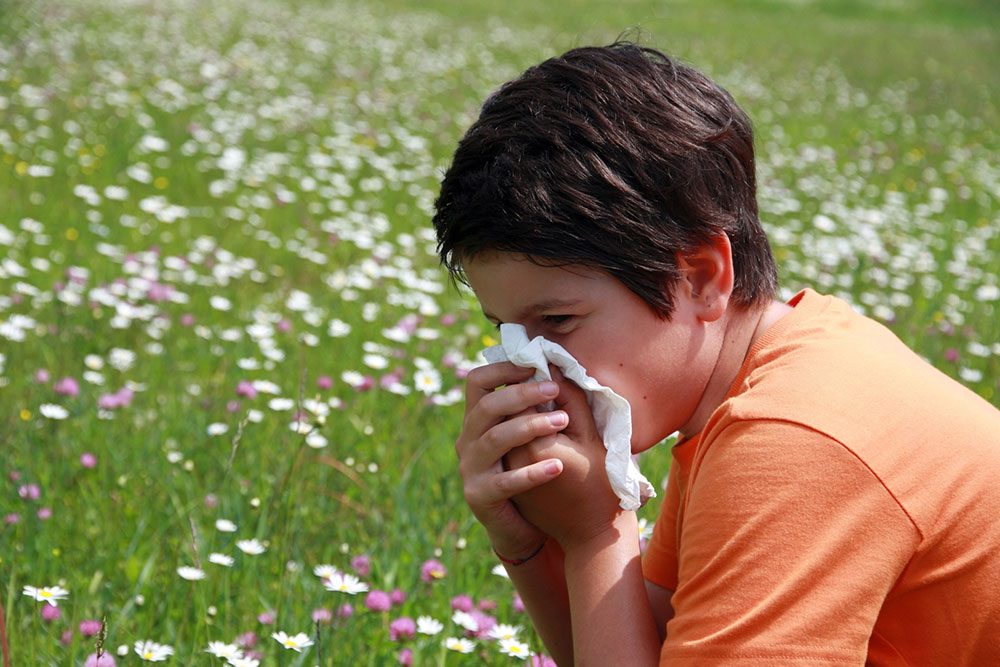A Guide to Pollen Allergies
Pollen can cause allergies and hay fever, and this is a very common problem in the country. Pollen is a powdery substance produced by flowers and trees. Many people show adverse effects when they breathe in pollen. Usually, when a harmful invader like bacteria or virus enters the body, the immune system starts to fight against it. However, some people face a problem whereby their immune system starts attacking pollen when it enters the body, even though it is not harmful. This response is known as an allergic reaction, and the pollen is known as the allergens.
Many people face this problem throughout the year while others have to deal with it only during a specific time of the year.

Pollen count
Pollen count is the level of pollen present in the atmosphere in a particular place. Checking this count is quite useful for the people who suffer from a pollen allergy. Based on the weather condition, the count will vary from place to place. An allergist carries out this test which helps us know the exact pollen count in an area. When you have an idea about the pollen levels outside, you will be able to plan your outdoor activities with ease.
Usually, there are three levels of pollen count — low, medium, and high. Sometimes, you can also find detailed information about which kind of pollen is present in the air in a specific area.
How is pollen counted and measured?
The allergist will place a pollen counter on the top of a building. With the help of these pollen counters, air is collected through different methods available. The allergist will also place a microscopic glass on the top of the building with a jelly-like substance on it. The pollen sticks to the glass because of this substance. Experts will then examine the glass and calculate the levels of pollen. In this way, one gets the pollen count in an area. When the count is high, people suffering from an allergy will have face adverse reactions if they go out.
Usually, most people with pollen allergies face problems in the winter. As the climate is dry, windy, and warm, it results in a high pollen count.
Symptoms of a pollen allergy
People with a pollen allergy exhibit various kinds of symptoms, and you need to monitor these symptoms carefully. You should also start your treatment before the condition worsens. Here are some of the more common signs:
- Facial pain due to sinus pressure
- Nasal congestion
- Watery and itchy eyes
- A runny nose
- Coughing
- Scratchy throat
- Severe asthmatic reactions
- No sense of smell or taste
- Swollen eyes
Tips to avoid the symptoms of a pollen allergy
The best way to get rid of a pollen allergy is to stay away from the allergens. So, when the pollen count is high, it is suggested that you should avoid stepping out of the house.
- When there is a forecast for dry and windy days, it is best to stay indoors.
- When the pollen count is high, keep the doors and windows of the house closed.
- Make sure that you are wearing a dust mask if you step out of the house on a dry and windy day.
- Talk to your doctor to get medications that can provide relief from the allergic reaction.
- If your medication is not working well, then your doctor may suggest taking allergy shots. These allergy shots work well and provide quick relief.
Home remedies for pollen allergy
- Always try to use HEPA filters in the house, even if you keep the doors and windows closed all the time.
- When you step out of the house and step back in, you should change your clothes as there are chances that pollen gets stuck on your clothes while you are out.
- Do not dry your clothes outside on the clothing line. You should dry them in a dryer.
- Always use air conditioners in your car rather than keeping the windows open.
- Try to sneeze out the pollen if you feel that it is in your nose.
- Make sure that you clean the house and all furniture regularly using a vacuum cleaner.
Not many people worry about the pollen count, but it can affect your health. If the count is low, then minimal care is enough. However, if the pollen count is high, you need to make sure that you take proper care and precautions. If you are allergic to a specific kind of pollen, you should try to find out if it is present in the air before you start worrying. You can consult an allergist who tests the air as they can provide the required information to you.

